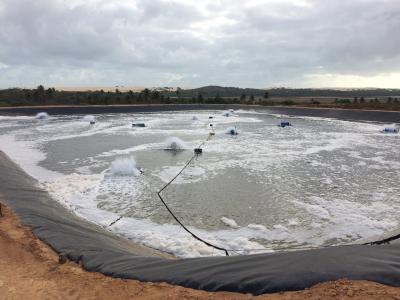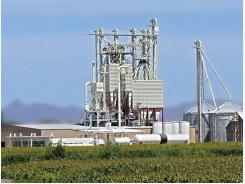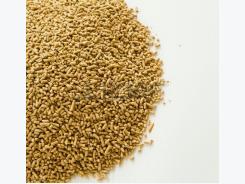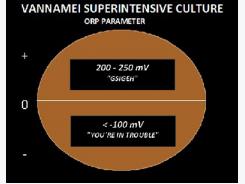Vannamei Superintensive Culture: Growth

For better understanding what is growth issue for vannamei we need to analyze two things: water conditioning and feed management. If your shrimp is growing probably, they are healthy and you are making good money and don´t need to read about this. However, if your shrimp´s growth is not satisfactory something in your water/feed that can be responsible for that. In high densities vannamei culturing, up to 200pcs/m2, we do not mention oxygen and temperature control anymore. Those parameters supposed to be controlled by greenhouses and artificial aeration in the system. If you are having problem with oxygen or temperature it means that your project must be review.
Do you know vannamei can reach 4 grams per week of average body weight or even more?
Natural vannamei open sea populations, as other shrimp species, need to growth fast to breed and maintain wild population even with mortality by fisheries and natural predation. However, why in closed culture systems with all control patterns we have a continuous fighting against 1.0gram/week (some places more than this, but in overall, less than this)? I´m sure that you think, it´s easy, “in open sea shrimp population have low density in a stable environment, that allow wild population to growth quickly”. Ok, maybe density could be one explanation of good growth, but everything is rare in open sea, include food and live organisms that shrimps needs on. There are no food! How can they growth, mate, breed, spawn and larvae survive with no food?
Stable environment I think is the answer for good growth.
Not just only in temperature, pH and oxygen are the most stabilized parameters to allow shrimp growth. I my opinion stabilized ionic balance in water is the key to understand and predict your average growth in the system, allowing to make all financial calculations with good error margin without kicking. For example, ionic balance readings can tell you how should be your growth to estimate harvest incoming.

It doesn´t matter if you are producing or planning your project. If your water culturing has 200mg/l of dissolved calcium ion and the ionic ratio between magnesium and potassium is 1-7-0.5, your shrimp growth must be minimum of 2.0grams/week average, independent of salinity and density system. How to correct and maintain these ionic values is another chapter. Nevertheless, if your vannamei growth isn´t fit in this chart, probably is a feed issue – quantity, quality, handling, management.
| Calcium (ppm) | Growth (g/week) by lonic ratio (Calcium, Magnesium and Potassium) | ||||
| 1-3-0.5 | 1-5-0.5 | 1-7-0.5 | 1-10-0.5 | 1-15-0.5 | |
| 50 | 0,7 | 0,8 | 0,9 | 1,2 | 1,5 |
| 100 | 1,0 | 1,2 | 1,3 | 1,5 | 1,9 |
| 200 | 1,7 | 1,9 | 2,0 | 2,2 | 2,6 |
| 300 | 2,4 | 2,6 | 2,7 | 2,9 | 3,3 |
| 400 | 3,1 | 3,3 | 3,4 | 3,6 | 4,0 |
Do you know how to feed your shrimp using a feed chart as a reference? Let me show you how I use to do…
If I have 6g ABW vannamei in 4 weeks growout by my feed reference chart here should be 5.8% of feed/biomass per week. That means 330kg of feed average per day or 2,310kg of feed per week to reach 7.5g at the next week (1.5g growth). In fact, this represent 1,425kg of biomass gain with a 1.62 FCR. It is not a real deal but here is the problem: you must to feed your shrimp to achieve your targeted growth. Because this, I do not use a feed chart as feeder calculator, but only to check if I´m going in the right direction.
Vannamei super intensive culture
Reference table
350-800 pcs/m2 Lined ponds
0-60ppt 4 meals 4 checking trays
| Week | ABW (g) | Biomass (kg) | Daily Feed (kg) | Weekly Feed % | FCR |
| 1 | 1,5 | 1500 | 120 | 8,0% | 0,6 |
| 2 | 3,0 | 2850 | 200 | 7,0% | 0,8 |
| 3 | 4,5 | 4275 | 270 | 6,3% | 1,0 |
| 4 | 6,0 | 5700 | 330 | 5,8% | 1,1 |
| 5 | 7,5 | 7125 | 380 | 5,3% | 1,3 |
| 6 | 9,0 | 8550 | 420 | 4,9% | 1,4 |
| 7 | 10,5 | 9975 | 450 | 4,5% | 1,5 |
| 8 | 12,0 | 11400 | 475 | 4,2% | 1,6 |
| 9 | 13,5 | 12825 | 495 | 3,9% | 1,7 |
| 10 | 15,0 | 14250 | 515 | 3,6% | 1,8 |
| 11 | 16,5 | 15675 | 535 | 3,4% | 1,9 |
| 12 | 18,0 | 17100 | 555 | 3,2% | 1,9 |
If your infrastructure, management and environment, I´m meaning Ionic Balance allow you to achieve 3.0g/week, use this as a reference number to indicate you the right amount of feed. With 6g shrimp to growth to 9g, it means from 5,700kg to reach 8,550kg of shrimp, considering a 1.5 FCR you must feed at least 4,275kg of feed in one week.
If your system do not allow to growth more than 1.0gram/week, it doesn´t matter witch feed chart or management are you using. Concentrate to reduce your feed cost only to achieve 1.0gram.
All other procedures is just for increase the FCR cost with no profitable results. When you are using or stimulating live food in growout ponds is more complicated to determine the ideal feed consumption because you must to monitor the live feed depletion and do not underfeed shrimps.
Well, if you do fed your shrimps to achieve 3.0g in one week and your water have conditions to do that, and they do not growth, some part of your management is wrong: water testing procedures, instruments and employee training or feed labor and management. Of course, disease and genetic issues are contributors to reduce growth ratio, but not as probiotic and hatcheries sales representatives’ say (nothing against them).
If you don´t understand nothing that I wrote above, think in this way: there is an amount of nutrients that can support the right quantity of shrimp growing. There is a limit for this and you can manage with profitable practices, but first you need to know what is going on.
The water and feed quality management is directly related to vannamei growth issue.
I understand the keyword “feed” as everything that your shrimp will eat to convert in muscle gain – commercial pelleted feed, fermented cereals, live zooplankton, manure, biofloc and so one.
I hope this information help you to improve your results! If you don´t mind, please let me know your opinion and tell me what issue do you want that I share next week. I´m still looking for a challenging project to work with around the world! Best regards from Brazil, Fabio.
Related news
Tools

Phối trộn thức ăn chăn nuôi

Pha dung dịch thủy canh

Định mức cho tôm ăn

Phối trộn phân bón NPK

Xác định tỷ lệ tôm sống

Chuyển đổi đơn vị phân bón

Xác định công suất sục khí

Chuyển đổi đơn vị tôm

Tính diện tích nhà kính

Tính thể tích ao









 Your guide to hatchery larval…
Your guide to hatchery larval…  Vannamei superintensive culture - ORP…
Vannamei superintensive culture - ORP…